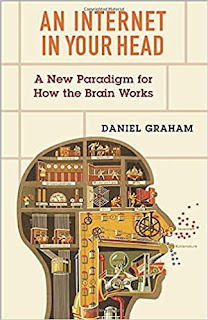Balance: How It Works and What It Means
Paul Thagard. 2022. Columbia University Press. [ISBN 978-0-231-20558-0. 336 pages, including index. US$32.00 (hardcover).]
A laboratory balance is a simple, one- dimensional instrument dating back to ancient science. In its earliest form, the apparatus achieved balance with equal masses on both sides—adding mass to either side tipped it out of balance. Paul Thagard elaborates in his book Balance: How It Works and What It Means, that although the topic of balance dates to this ancient apparatus, it expands into immensely rich, multidimensional areas. In his book, the author first explains scientifically what balance is from a biological and medical perspective and then shifts into an evaluation of balance metaphors that help us fill in the gaps of our scientific knowledge—and whether these metaphors are strong, bogus, or even toxic to culture.
Inspired by Thagard’s own bout of vertigo, the first four chapters explain the science behind human balance and some of the common conditions that result as a breakdown of the mechanisms. He continues to use his personal experience with vertigo as an example, or the “experience of illusory motion: something seems to be moving even though it is not” (p. 42). This balance malfunction usually includes a mismatch of signals from all the neurological functions involved—the inner ear canals, vision, and hair cells send information to the brain—when vertigo occurs these signals do not match, thus creating a spinning sensation.
In the section linking balance to feelings, Thagard applies his balance mechanisms to the expanding field of mind and body, or the origins of consciousness. “My . . . theory explains why balance is usually unconscious but enters consciousness when problems arise. Unlike (other theories) my theory also explains why different imbalance experiences such as vertigo and nausea come with different feelings” (p. 105).
In chapter 5, Balance shifts to an explanation of metaphor and its role in understanding balance. Thagard states that literal mechanisms only explain basic biological and medical applications of balance, yet it is much richer than that. “But balance concepts flourish in other areas of human thought, including science (chemical equilibrium), medicine (balanced diet), psychology (stable personality), art (balanced composition), and philosophy (reflective equilibrium)” (p. 106).
In this lengthy analysis covering many subjects regarding balance, Thagard again references vertigo. Most notably in his analysis of the film Vertigo starring James Stewart and Kim Novak. His observation, “Hitchcock largely flubbed the science of vertigo, but he powerfully portrayed the balance disorder of dizziness triggered by heights. Just as effectively, he presented metaphorical vertigo provoked by uncertainty in romantic relationships and especially by astonishing events that have no explanation” (p. 232).
In conclusion, the author’s analysis of balance in philosophy challenges the assumption that being out of balance is not entirely negative—the idea of metabalance. This implies that “leading a meaningful life requires finding a balance between balance and imbalance” (p. 269). Thagard concludes by suggesting that a satisfying life requires an element of both.
Julie Kinyoun
Julie Kinyoun is an on-call chemistry instructor at various community colleges in Southern California. An avid reader, she enjoys reviewing books that help her become a better educator.









